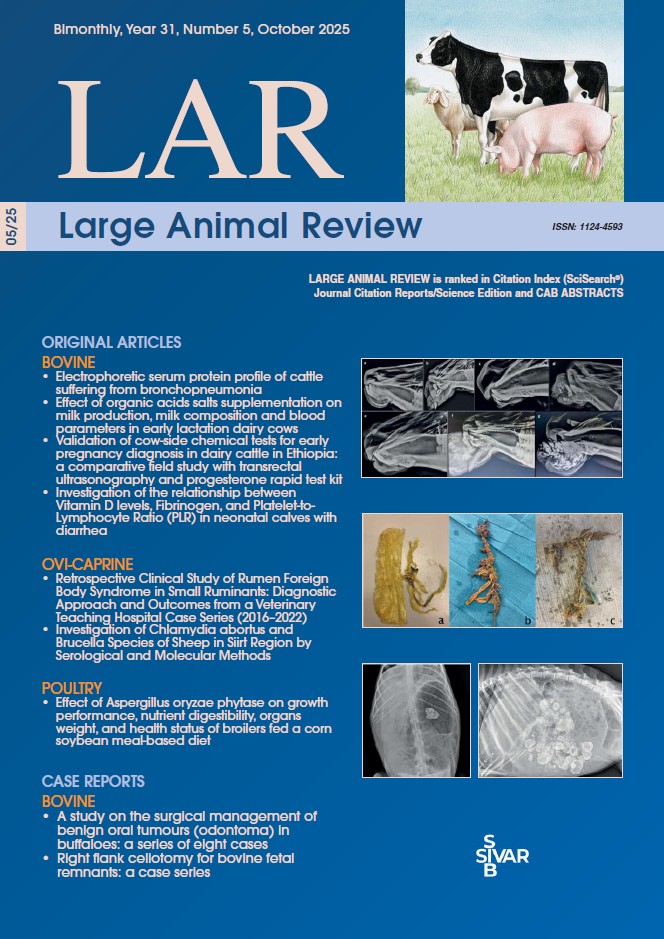Right Flank Celiotomy for Bovine Fetal Remnants : A Case Series
Abstract
Fetal mummification and maceration are significant gestational pathologies in cattle, characterized by fetal death and subsequent intrauterine retention of fetal tissues, often beyond the expected term. These conditions arise due to various etiologies including umbilical cord torsion, hormonal imbalances, infectious agents, and failure of cervical dilation or luteolysis. The current study documents five cases of fetal mummification and maceration in Jersey crossbred cows, each exhibiting unique clinical presentations and diagnostic features. All animals had previously received prostaglandin F₂α (PGF₂α) treatment from local para-veterinarians, yet failed to expel the retained fetus, necessitating referral for further evaluation. Thorough obstetrical examinations—including per-vaginal and transrectal assessments were instrumental in confirming intrauterine fetal death and characterizing the extent of pathology. Ultrasonographic examination using a 7.5 MHz linear rectal transducer provided definitive visualization of intrauterine contents, differentiating mummified fetuses from macerated remains. Sonographic findings ranged from compact, echogenic fetal masses without fluid in mummification cases to hyperechoic bony fragments within heterogeneous, fluid-filled uteri in maceration. Due to failure of medical management, all five cows underwent right flank celiotomy. Surgical intervention involved exteriorization of the uterus, manual evacuation of retained fetal contents, uterine lavage, and layered closure using standard surgical techniques. The intraoperative findings corroborated the diagnosis, with maceration cases showing extensive necrotic debris and purulent exudate, while mummification cases presented dry, leathery fetuses within contracted uteri. Postoperative care included NSAIDs, antibiotics, fluid therapy, and daily monitoring. All cows recovered uneventfully and were discharged on the fifth postoperative day with recommendations for 60 days of sexual rest. During a three-month follow-up, no surgical complications or systemic illnesses were observed. Estrus returned in all animals within 2.5–3 months post-surgery, and three cows successfully conceived following artificial insemination in the fourth month. The remaining two cows were not rebred due to owner preference. This study highlights the diagnostic challenges and therapeutic considerations in managing fetal mummification and maceration. While PGF₂α remains the first-line therapy, surgical intervention is warranted in refractory cases. Celiotomy, when executed with proper technique and post-operative care, offers a viable and fertility-preserving solution. The use of transrectal ultrasonography was pivotal in case differentiation, guiding both diagnosis and treatment strategy. These findings emphasize the importance of early, accurate diagnosis and timely intervention for favorable reproductive outcomes. With appropriate management, even severe cases of fetal retention can resolve with restoration of reproductive function, as demonstrated in this case series.


